Salve! (‘Welcome’ in Latin). Classics at Junior Cycle takes students on an odyssey through the ancient world, from myths to daily life, from Rome to Greece and from the lowest plebeian to the king of the gods.
How to get a Distinction in Junior Cycle Classics
 By Simon Toner - 13 minute read
By Simon Toner - 13 minute readThis guide to Junior Cycle Classics is written by Simon Toner, a classics teacher with over 10 years of experience.
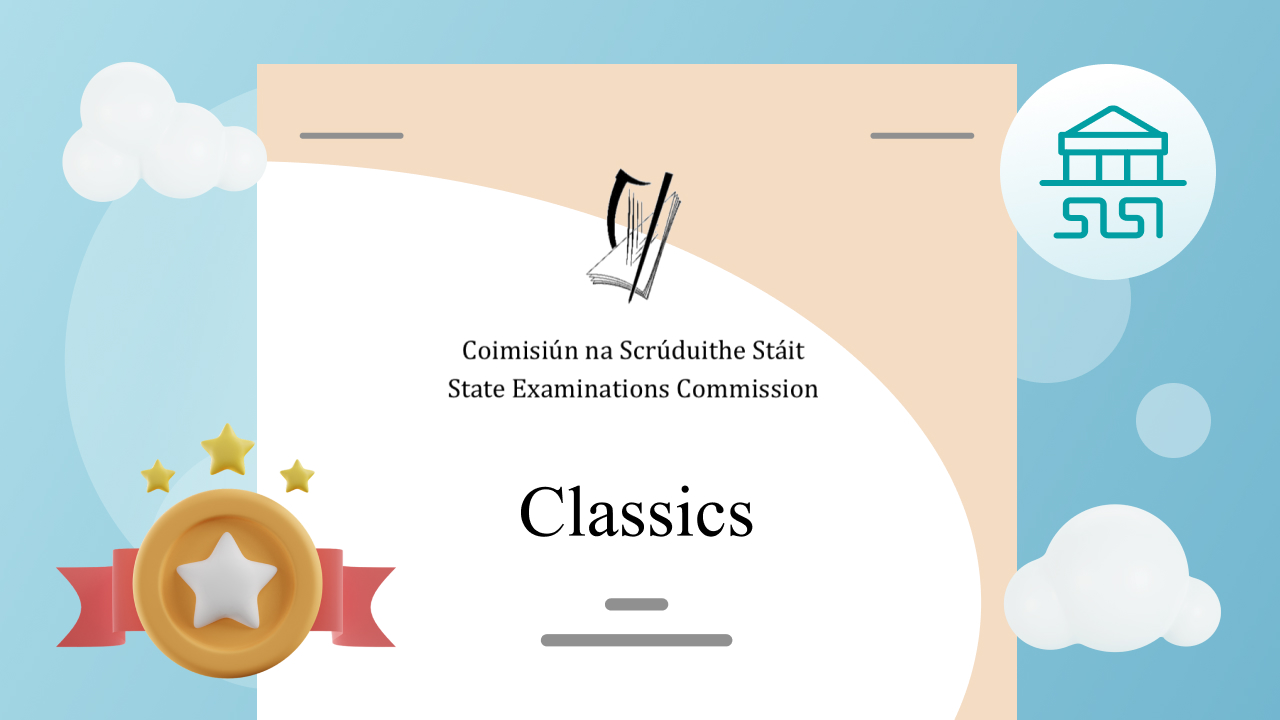
Jump to:
Introduction

Strands
In JC Classics we divide up the course into several key areas called ‘strands’. Each student must study strand 1 but teachers can choose to explore either strand 2 OR strand 3. Here’s a breakdown of what’s in each strand:
Examine and share ancient myths from Greece and Rome, focusing on the gods, heroes, villains and monsters that dominated ancient storytelling. You’ll learn about Athena, Zeus, Hades, Medusa, Heracles (Hercules is his Roman name), the underworld and more.
Explore the daily lives of the people who lived in Ancient Greece and Rome. We focus on their families, jobs, religion, entertainment, armies and famous battles and much more.
Explore the ancient world as seen through one of the oldest stories in history: Homer’s Iliad. You’ll get to read through the Iliad (or sections of it) and study the ancient heroes like Achilles, Odysseus, Hector, etc. in their 10-year war at the city of Troy.
Analyse the great buildings and structures that made the Roman Empire an architectural and cultural marvel. You’ll study three buildings in detail as well as the lives of the historical figures who commissioned the buildings.
In this strand, you’ll learn to speak, read and write two of the world’s oldest languages: Latin and Ancient Greek. You’ll learn common phrases and the origins of words we still use today and you will be able to read some literary texts in their original language.

CBA 1: storytelling using myth
There are 2 CBAs in the Junior Cycle Classics course. The first one looks at storytelling using myth.
Oral histories, myths and stories were an incredibly important part of life in the ancient world. Stories provided the Ancient Greeks and Romans not just with entertainment but as a way of worshipping their gods. The word ‘myth’ comes from the Ancient Greek word ‘mythos’, meaning 'story'. These stories can take the form of oral stories, texts, poems, epics, vases, sculptures and more.
During your study of classics, you’ll have come across a wide range of myths, from the stories of the Greek gods like the Titanomachy, Athena vs Poseidon or Jupiter and the Bee, to the myths around their heroes such as Perseus, Heracles, Theseus, Atalanta, Aeneas, etc. We even use these myths in modern times and change them to suit modern audiences such as Percy Jackson, Netflix’s Blood of Zeus or even Disney’s Hercules.
Let's break this CBA down further:

Researching your myth
You’ll have a few weeks in class to research your chosen myth and put together your CBA. This can be daunting at the start because there are so many to choose from in Ancient Greece or Rome. Make a note of your favourite stories or at least your favourite type of story. Do you love the action of the myth of Jason and the Argonauts? Are you enthralled by stories of love such as Orpheus and Eurydice? Do the villains of Tartarus like Sisyphus, Ixion or Tantalus jump out at you? Or are you thrilled by the stories of monsters such as Medusa, the Chimera or the Hydra?
Think about what we can learn about the Ancient Greeks and Romans from your chosen myth. Was it designed to instil some moral message in people? How did the Greeks and Romans use this myth to explain their world? How has your character developed throughout your chosen myth? You can display or present your myth and follow on with some analysis by asking and answering these questions. Show your teacher that not only do you know your myth but you also know why it’s important to the Greeks or Romans.
It’s not enough to just retell the story of your myth, you need to showcase what it tells us about the ancient world.
The best CBAs will showcase their chosen myth while also highlighting the purpose of key features of mythological storytelling throughout. For example, if you’re picking the myth of Arachne, you need to keep in mind what this myth tells us about the role of women in Ancient Greece or how important worshipping the gods was. The story of Arachne also gives the word ‘arachnid’ which means spiders.
- If you’ve been studying 'strand 1: Myth' in class, make a note of your favourite stories or at least your favourite type of story.
- Have fun with it. This CBA allows you so much creativity and choice that you should pick a myth you’re genuinely interested in so you can enjoy the process.
Finding sources
While you’re doing your CBA, keep note of where you’re finding your sources and how the process is coming along. You could impress your teacher with a bibliography (list of sources like books, websites, etc.) and make sure you include a review or reflection at the end of your display.
Finding sources can seem like an immense task at the beginning of the CBA. Try to get a hold of some ancient sources regarding myths, most of which can be found online. Stephen Fry’s Mythos book series also provides loads of different Greek myths you could draw inspiration from.
Here are some helpful websites and videos to get you started:
Presenting your chosen myth
It’s important to remember that you can complete this CBA individually, in pairs or in a group.
This CBA is your chance to put your own spin on these myths or even to create your own. There are lots of different ways you could present your chosen myth, for example:
Act out a story or myth
Write out a version of a myth
Write your own myth
Adapt an existing myth
Create a cartoon or a graphic novel of a legend or a myth
Present a myth in a visual style
Focus on a particular moment of a myth or key decision or action of a character
Present guidelines for telling stories
You can present your CBA in any way which suits you such as acting it out, as a display or presentation or as an audio or video recording. You need to capture the important aspect of the myth and display an understanding of the key components of storytelling.

CBA 2: Rome - centre of an empire
The Roman Empire stood for hundreds of years and had many achievements including its works of art, literature and military conquests and it shaped the history of Europe and beyond. However, the Romans were also amazing builders and engineers. CBA 2 allows you to explore this by compiling a record of your imagined visit to a public building in the city of Rome that is associated with a leisure activity or with a relevant political leader or emperor. Let's break this CBA down further:
Choosing your building
As there are so many to choose from, it’s useful to narrow down what type of building you’re going to look at. The obvious ones involve the gladiator fights in the Colosseum or chariot races in the Circus Maximus but there are other options too. Don’t forget you could include Roman theatres or baths which the Romans also utilised for entertainment purposes. Roman basilicas or forums were administrative and civic centres and formed an integral part of daily life in the city of Rome. Triumphal arches and columns provided great prestige to Roman emperors and many of these are treasured historical sites, still standing today.
Once you’ve chosen what type of building to explore in your CBA, you can pick a specific building from this category. You’ll need to research the nature and importance of the physical infrastructure of the city of Rome through a detailed exploration of one key building to be selected from the many different types of buildings, structures and sites with which we are familiar. This includes administrative centres, leisure buildings, military structures and commemorative monuments.
Your chosen building (structure, venue or public space) should not be one you’ve studied in 'strand 2: Rome - Centre of an Empire'.
If you’re stuck when you’re trying to find a building, have a chat with your teacher and see if they can name any famous buildings which would be suitable. Then, you can take a look at a few and decide on which one you’re most interested in.

Researching your building
Your CBA will need to be a record compiled of an imagined visit to the building by the student in the role of a traveller (alone or with companions) who has left her/his small country village for a day and is excited to be visiting the metropolis of Rome. Try to watch videos which explore the city of Rome as it stood 2,000 years ago and put yourself in the shoes of someone who has never experienced a city of this size before. There are many videos and websites which offer virtual tours of Rome and many of its historic buildings which will be a great help here.
When you’re undertaking your research, try to keep the following in mind:
- the role or contribution of a building to an aspect of significant developments in the history of Rome;
- the role of a significant figure (such as the political leader or emperor of the time) in the commissioning and construction of the building;
- the role played by the building and the activities that took place there in the political, social, cultural, religious or military life of Rome;
- what the function of the building can tell us about how those who used it lived their lives.
Keep track of where you’re getting your evidence. Primary sources are key here and if you can track down a primary source which deals with your chosen building, that would be great. For example, the historians Cassius Dio, Pliny the Elder, Tacitus and Suetonius write about the Colosseum and other features of the city while they lived in and travelled the Roman Empire.

Finding sources
You need at least two sources (which you should include in a bibliography at the end) but if you get a few more you’ll have more information to work with. Some sources will be more beneficial than others. Some might give you loads of information while others might just give you a small quote. It’s all useful if it’s relevant to your chosen building.
Here are some helpful websites and videos to get you started:
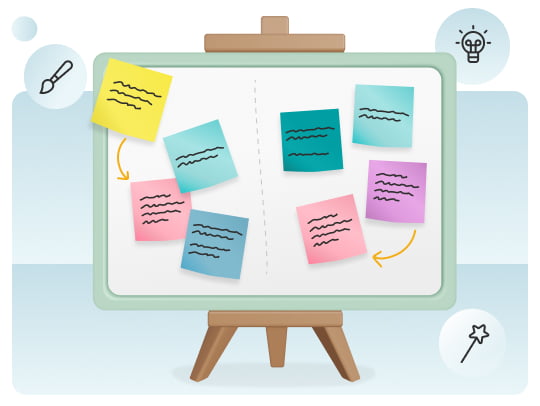
Presenting your chosen building
You will be marked individually on your contributions to the CBA but you are allowed to complete the CBA alone, in pairs or in groups if you want. Just make sure you can demonstrate that you’ve done loads of work on the CBA so you get the best grade possible.
When completing your CBA, you can undertake it in a variety of ways as long as it’s in the form of a record. You could write or type it as a blog, record it as a vlog, an article for a website, a poster, a newspaper report or an interview or presentation. Your record should be accompanied by a visual representation or a model that supports the description of the structure and its architectural features. If it’s a large area like the Roman Forum, you could create a map of the area whereas for smaller buildings or monuments, you could recreate the building or monument itself out of cardboard, etc.
As with CBA 1, try to be creative. Your project will be better and you’ll enjoy it more.
In the end, don’t forget your reflection. Focus on what you learned about the topic and on your experiences as a researcher, the good and the bad. Just be honest. Everything might not have gone perfectly and that’s OK.
A good reflection (for both CBAs) will include what went well but also what challenges you faced and how you overcame them.
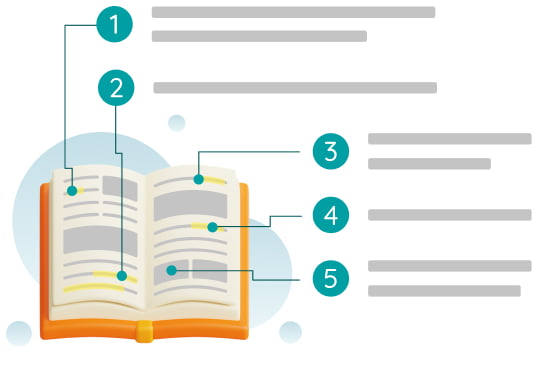
Assessment breakdown
The assessment consists of mainly two components: the Assessment Task and the final exam.
Assessment Task
As of writing this guide, the Assessment Task has not been undertaken yet due to COVID. Here are the guidelines from the State Examinations Commission:
- students complete a specified written task which is sent to the State Examinations Commission for marking;
- the Assessment Task will link to 'Rome: Centre of an Empire' (CBA 2, strand 2) or the student language portfolio (CBA 2, strand 3);
- the Assessment Task will be undertaken following the completion of the second Classroom-Based Assessment in Year 3.
Final exam
The exam is broken down into four parts, each worth 180 marks. You only need to do two here: everyone does strand 1 so you choose either strand 2 or strand 3, depending on what you’ve studied with your teacher. Each strand is worth the same marks and you have two hours to complete the paper so give each strand one hour. Stick to the timings; don’t spend too long on one half and neglect the other.
Here are the sections:
- Section A: Myth and Daily Life
- Section B: The World of Achilles - Rome
- Section C: Classical Languages - Latin
- Section D: Classical Languages - Ancient Greek

Exam tips
Here are some exam tips you might find useful:
Timing
Timing is key in any exam. Keep an eye on the clock and know when to move on to the next question or section. Don’t get sucked into spending ages on a question as this might neglect others which may be worth more marks to you. Planning is key, especially for the extended answers section. A good plan can take a little time but can earn you marks and save you time in the long run. Don’t neglect your planning.
Drawings
The exam guidelines do allow for the use of appropriate drawings, diagrams, etc. to answer questions. These may be helpful to you to explain architectural terms or to describe a building for Rome: Centre of an Empire. It’s not an art exam so don’t fall into the trap of trying to do an amazing illustration here if you plan on utilising drawings. Something quick, simple and easy to understand is perfect.
Stimulus materials
In each section, you’ll be provided with some stimulus materials. These are usually pictures or short pieces of text and you are asked a few questions on them, with some longer answers following. Make sure you use the pictures and text to your advantage (the answers are there).
Sample question
For example, if you’re asked to explain why these images (from the SEC Sample Paper) are of Heracles, have a look and see what features you can make out:
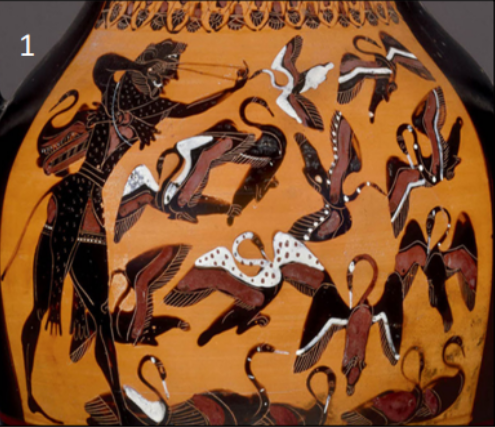

The main clue is that in both images, Heracles is wearing his trademark pelt of the Nemean Lion. Once you realise it’s him, you can spot the birds on the vase and hopefully realise that here, Heracles is completing one of his Twelve Labours (defeating the Stymphalian birds).

Tips for answering exam questions
Tips for Exam Questions
Read the question
When you’re given a piece of text, make sure you read the questions first as that way you can realise what the question is asking before you spend time reading the text.
Highlight key terms
When reading questions, highlight the key terms as you go so you can pop them into your answers (see the 2022 example).
Use quotes
It’s important to quote from the texts given but make sure you use that information to properly answer the question too.
Don't rush
Don't rush in if you’re presented with some 'tick the box' questions. You have time here so use it and make sure the answer you’re selecting is the right one, especially in the Classical Languages sections (if you’re doing that strand). The same applies when you’re translating to/from Ancient Greek or Latin in the Classical Languages strand: don’t dive in but be thorough in your work.
Example from 2022
See below an example of highlighting key terms in an exam question:
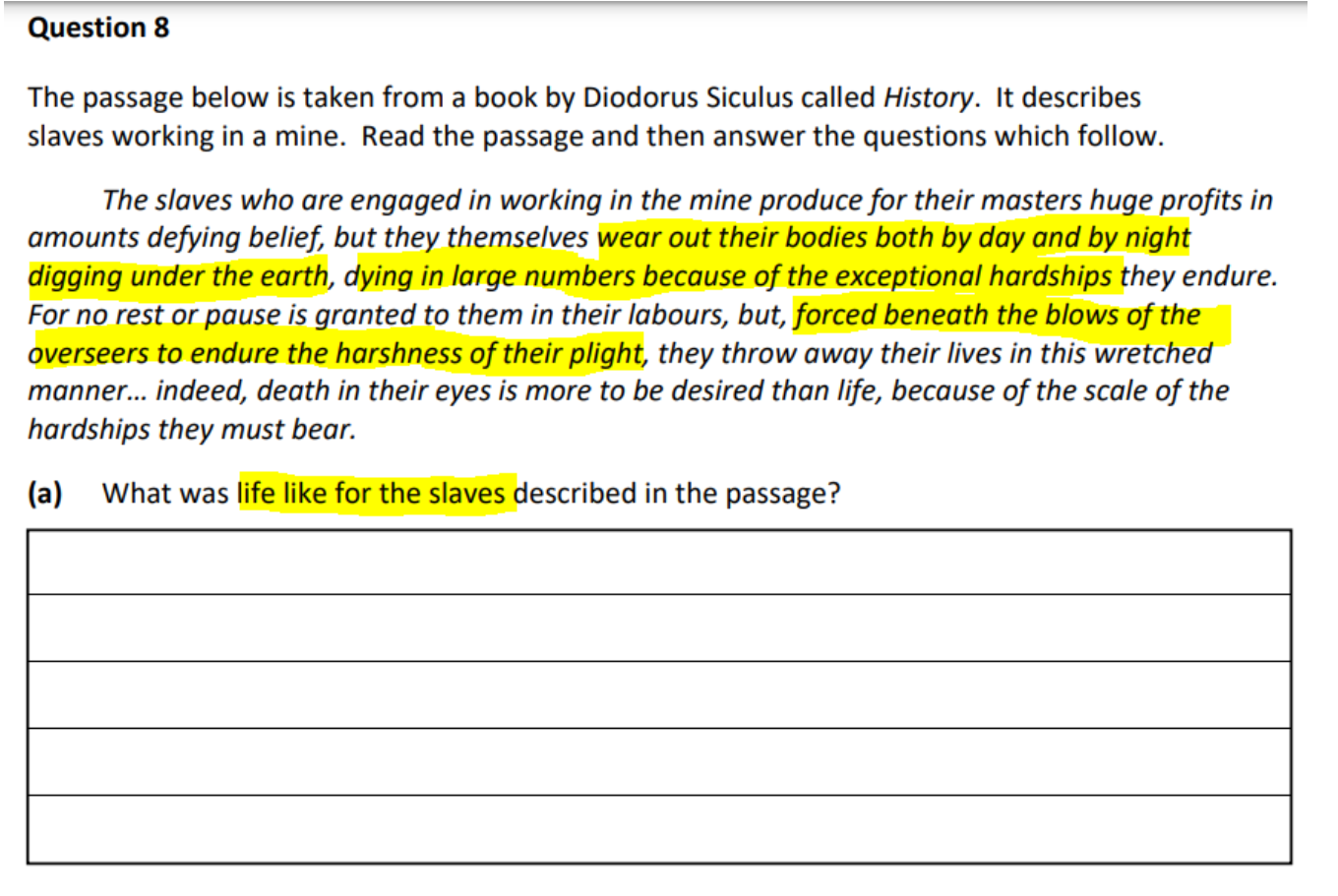
Hopefully, this guide will help you on your quest to overcome the heroic quest that is the Junior Cycle. I’ll leave you with a little Latin phrase:
“Per aspera ad astra”
Through hardship, to the stars

Simon teaches Classics, History & English in Ratoath Co. Meath and has over 10 years of experience. Simon is a graduate of NUIM with a BA in History & Classics and an MA in Military History. His favourite figure from history is Alexander the Great who he considers to be one of the most brilliant military commanders of all time.

